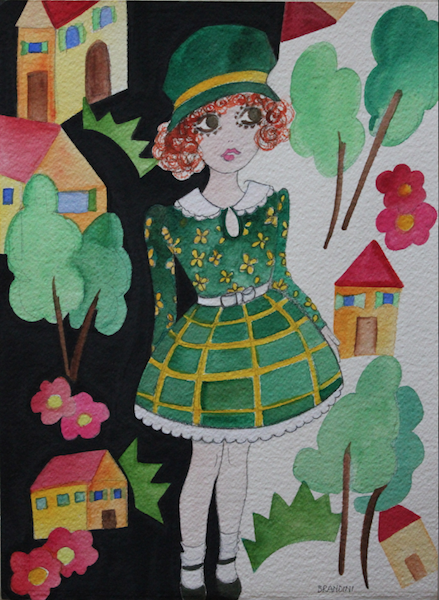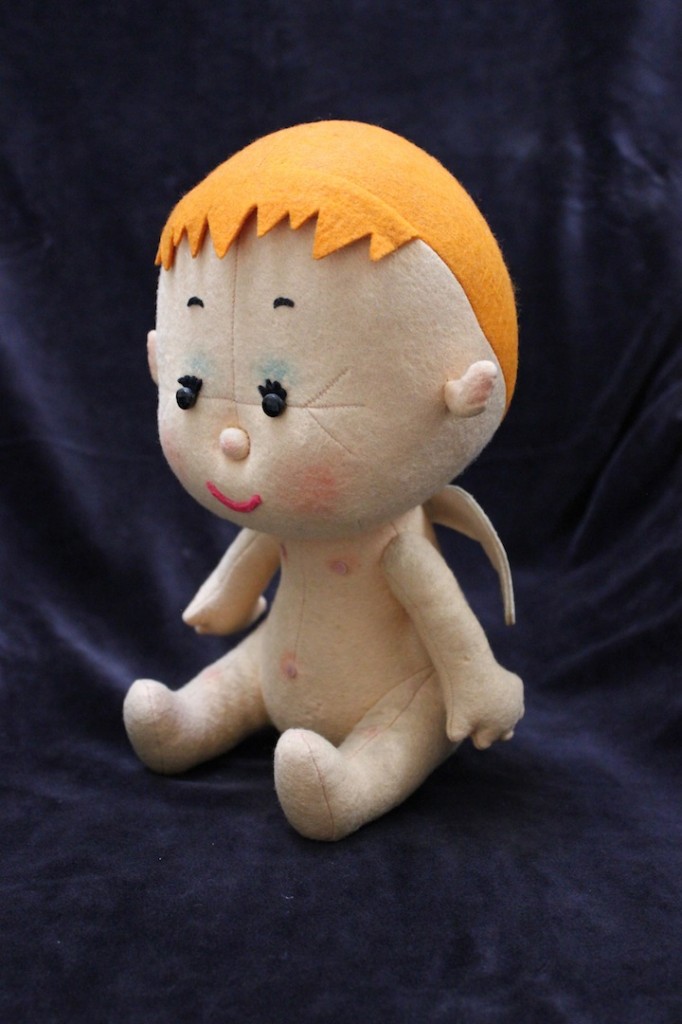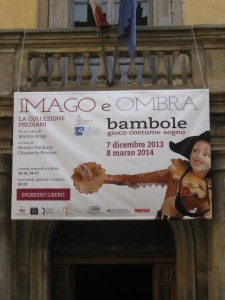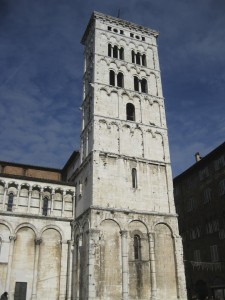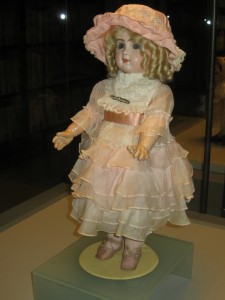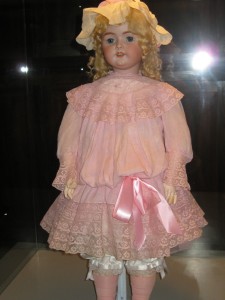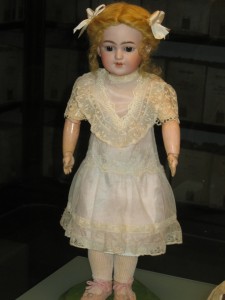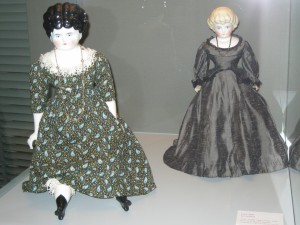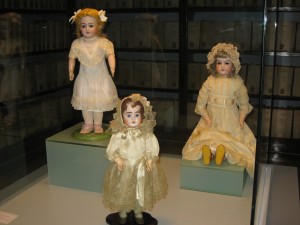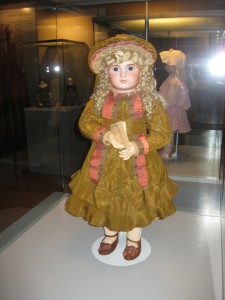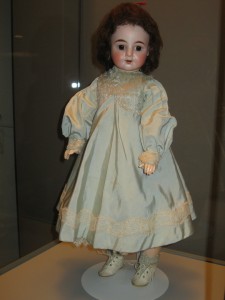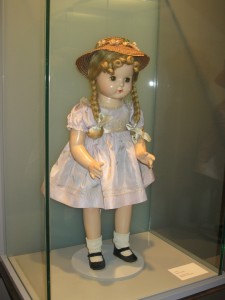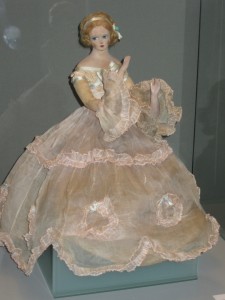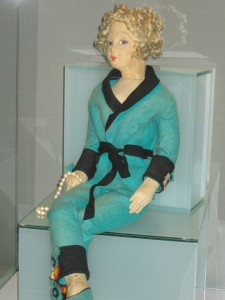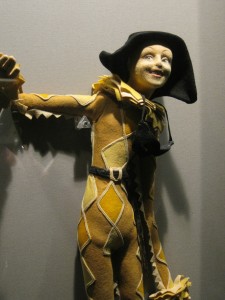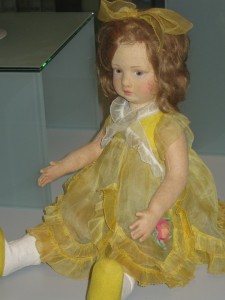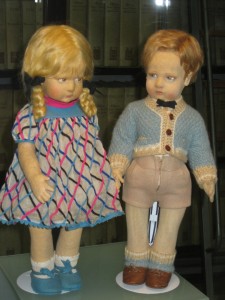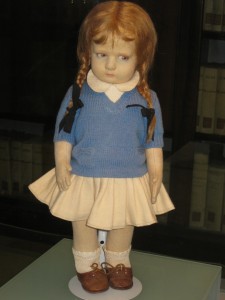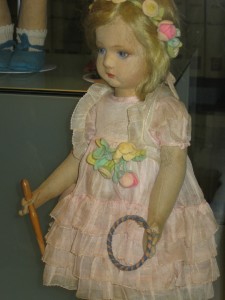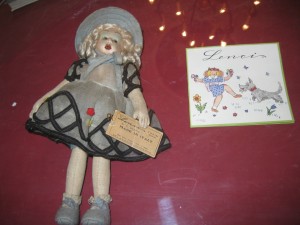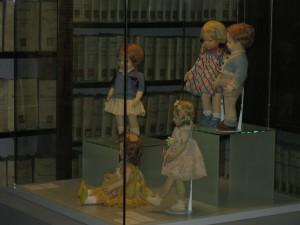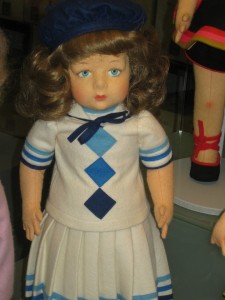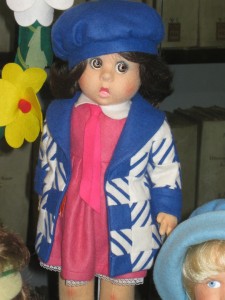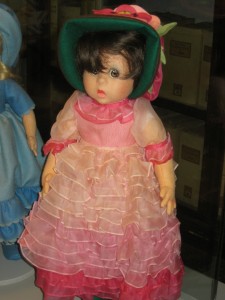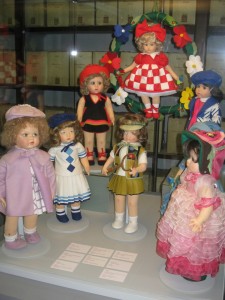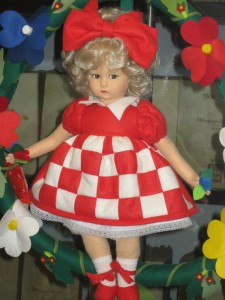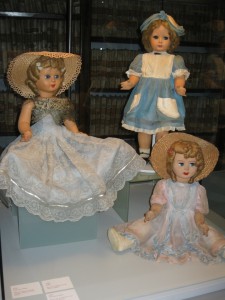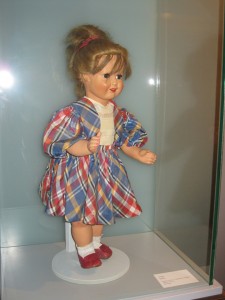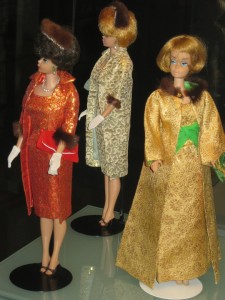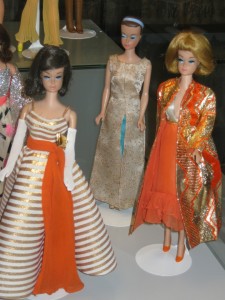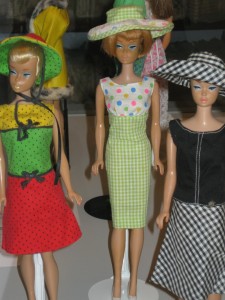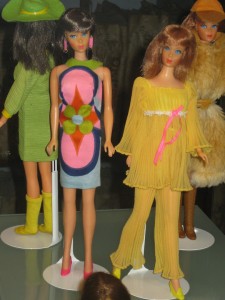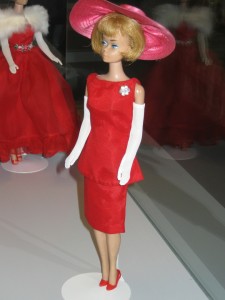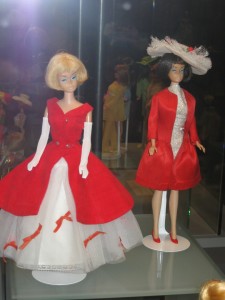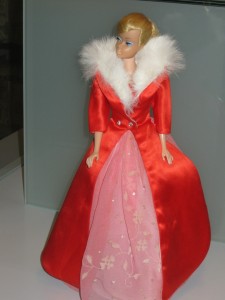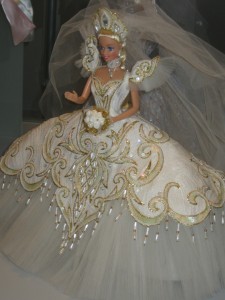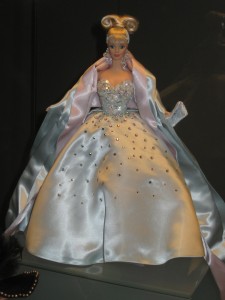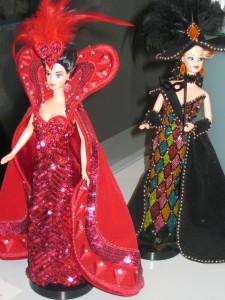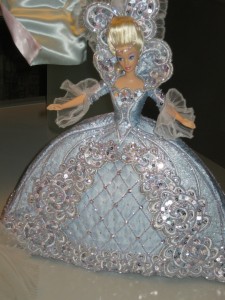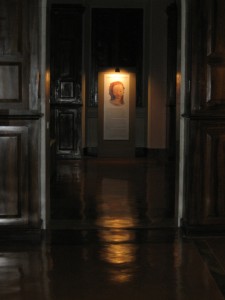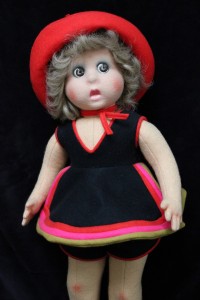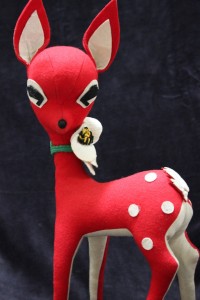“DOLLY” by Beatrice Brandini
“Angel”, Lenci private collection
In Lucca, in the prestigious Palazzo Guidiccioni, headquarters of the State Archives, there is a lovely exhibition of the Dolls: IMAGO AND OMBRA costume play dolls and dream.
It will be open until 8 March.
Banner on the facade of the Palazzo Guidiccioni particular Church of San Michele
Lucca is a gem among the Tuscan cities, protected by its Renaissance walls, nearly intact, full of towers and squares, where all its splendor is a pleasant vision.
French doll of 1895 (factory Jumeau) German doll from 1895 – 1910 (factory Simon & Halbig) German doll in 1897 (Simon & Halbig factory)
But let’s get to the dolls, friends and companions of games, stories, and especially the dreams of little girls (and adults) of all ages and around the world .
The exhibition highlights the antiquities collection of Renata Frediani, where precious dolls in the seventeenth and eighteenth centuries, to make room for newer creations, but no less magnificent, such as those of the manufacture Lenci or the Barbie 60s.
German dolls end 1800
However, the most striking addition to the beautiful stars of the show, dolls, is the placement of the same, in the magnificent rooms of the Archive, wonderful place, steeped in culture, history and beauty .
French doll 1907 (the factory Jumeau) German doll 1900 (Recknagel factory)
American doll in 1935 (factory Madame Alexander)
I will not dwell on the sacred dolls made of clay, beautiful examples of Italian craftsmanship, but pass directly (even for personal preference) the nineteenth, important century for the toys production and specifically, of dolls. Dolls made of bisque or porcelain Paro (white flesh that owes its name to the Greek island Paros marble quarried), with precious details. The most important productions were German and French.
Italian doll 1900 Italian doll 1924 (attributed to the company Magit)
The production of Italian dolls, between the end of ‘800 and ‘900, is virtually nonexistent. With the exception of precious and magnificent examples of sacred dolls, where master craftsmen were able to express their skills. You must cite the factory Furga, in the province of Mantua and a few others like that of Fagagna in the province of Udine, or the Ratti & Vallanzasca of Arona.
Harlequin 1924 Lenci Torino Leonetta 1925 Lenci Torino
We must get to the end of the First World War, in 1918, to cite one example of the production of the world’s most famous doll, or that of the Lenci, Turin company founded by Elena Koning and her husband Enrico Scavini. The acronym LENCI which speaks volumes on the intent of the project “Ludus Est Nobis Costanter Industry” – “The game for us is a steady job”.
Tonina and Tonino 1930 Lenci Torino Paoletta 1931 Lenci Torino Eleonora 1935 – 40 Lenci Torino
Londina 1930 Lenci Torino Groupage Lenci 30s
The Lenci dolls were among the most beautiful ever created, highly sought after by collectors around the world of yesterday and today. Made from a special felt defined Felt Lenci (still today if you speak felt using the word pannolenci), which characterizes all the productions of the factory in Turin. I’ve always loved these dolls, their faces intense for their fancy dress and precious, for fine craftsmanship, are much more than just dolls. The Lenci have been “signed” also by great artists such as Dudovich, Vacchetti, Sturani …. Testimony of an era, a taste, a style that we have, alas, lost.
Susanna 1978 Scolaretta 1985 Charlotte 1986 Lenci Torino
The art critic Ugo Ojetti called Lenci: “The originality of invention so witty and a refined delicacy of execution so that the people admire and want them, as the children”.
Teca with Lenci Doll 80s and 90s Doll who plays the trademark Lenci
Other examples of Italian dolls of the ’40s. Interesting example of the right with the Scottish dress, or a doll made entirely of hard plastic, innovation for its time, a tribute to the actress Shirley Temple.
Italian Dolls 1940s and 50s Patrizia Marina and Marta (factory Athena Piacenza) Italian Doll Shirley 1940 (factory Bonomi Milan)
Other separate paragraph deserve the Barbie, which exhibition give importance and space.
Barbie from 1961 (Barbie Bubble Cut, Mattel USA)
Some Barbie from 1965 Barbie e Francie (Barbie’s cousin ) from 1967 and 1968
Barbie makes her entrance in 1959, thanks to Ruth Handler who with her husband owned in Los Angeles Mattel toy factory. It is said that during a trip to Switzerland Ms. Handler was struck by a doll, Lilli, so much to buy the German company, Elastolin Hausser, the patent and the rights to produce this doll in America and make it the legendary Barbie. The enterprising lady Mattel took a lot of effort to turn the Lilli doll in a more modern, even more similar to itself, and true embodiment of the American dream girls of the fifties.
Some examples of Barbie 60s (1964 and 1965)
The difference of the Barbie dolls with all other, however was represented by its infinite and constantly renewed wardrobe. For the first time a doll possessed an endless wardrobe, perfectly aligned with the current fashion trends, with a different set for a different use and throughout the day. Just like a real wardrobe.
Barbie Empress Bride, 1992 (Bob Mackie Collection) Barbie Billions of Dreams, 1997
Barbie Queen of hearts, 1994 Barbie Masquerade Ball, 1993 Barbie Madame du Barbie, 1997 all Bob Mackie Collection
Barbie has undergone many transformations over time, in line with the tastes of the time, but always keeping intact the charm and magic. From the generation of the sixties to the present, there isn’t little in the world that has not owned a Barbie or more, and has not fantasized about her creating stories and adventures. Dreaming of look like her (not exactly a Mediterranean model) at least a little.
Hall, Palace Guidiccioni
Thanks dolls ….. for making us so much companionship and unforgettable moments.
Little Mermaid 1980 Lenci private collection Fawn in felt, private collection
Good life to all!
Beatrice


